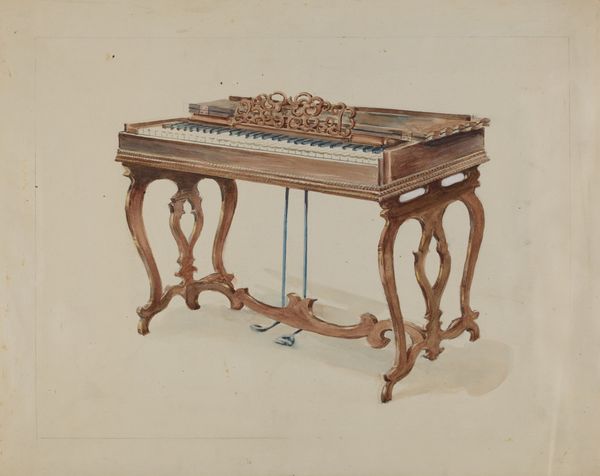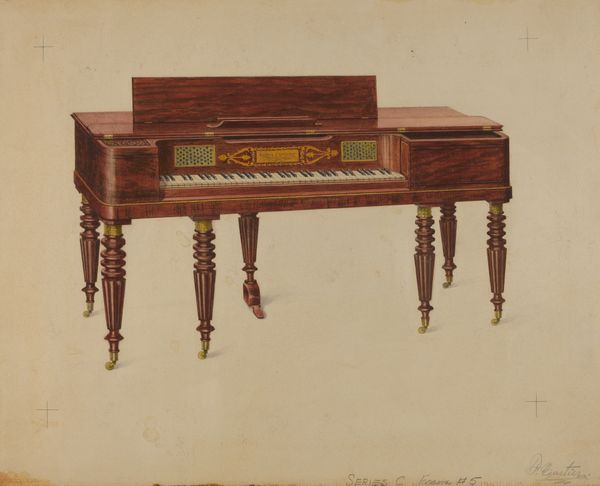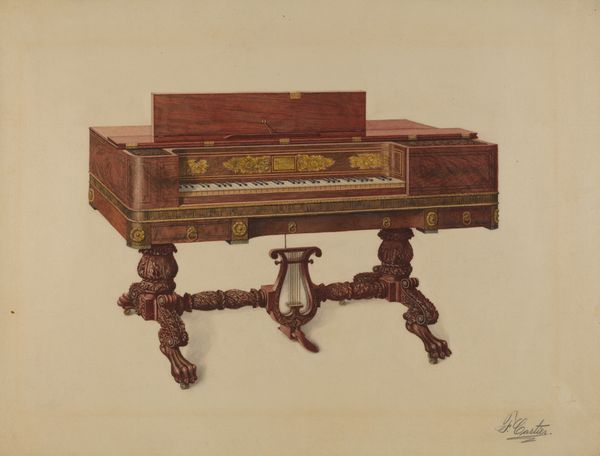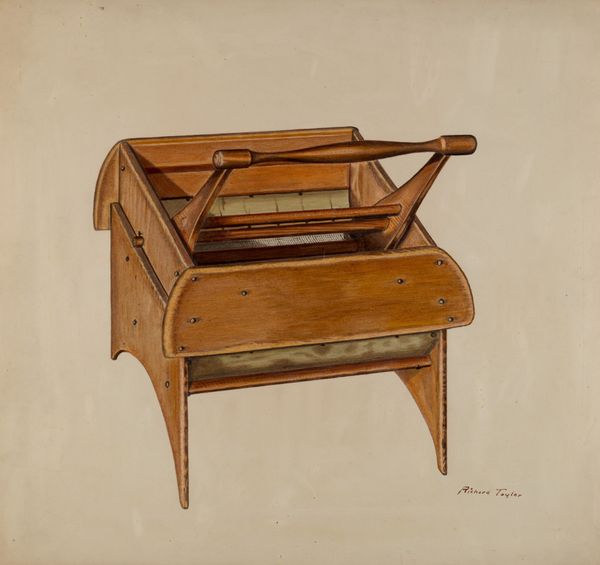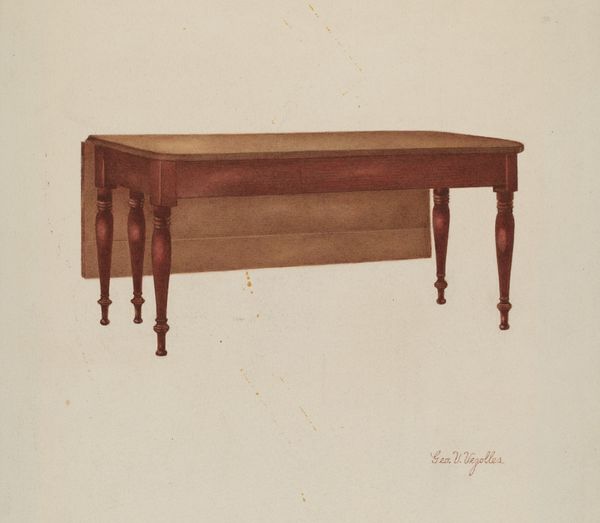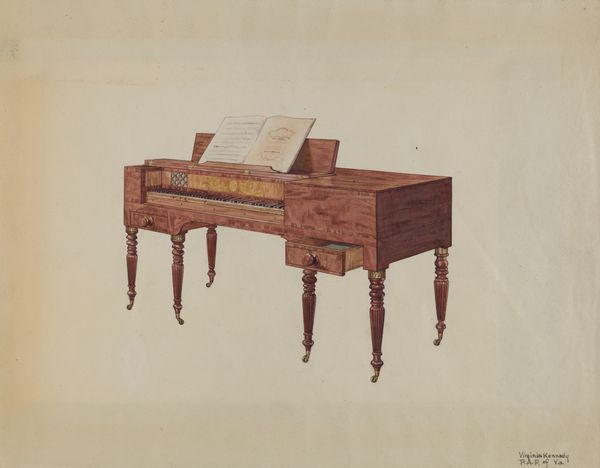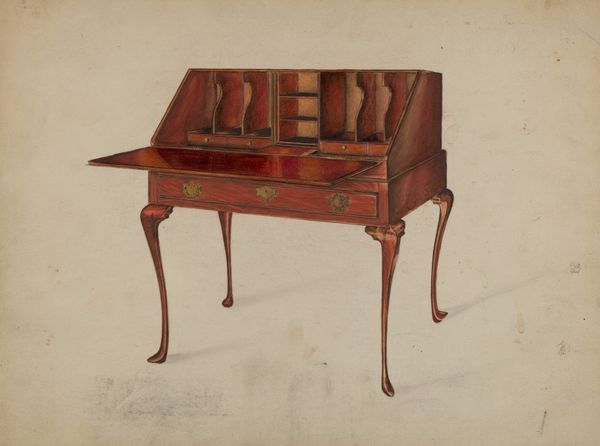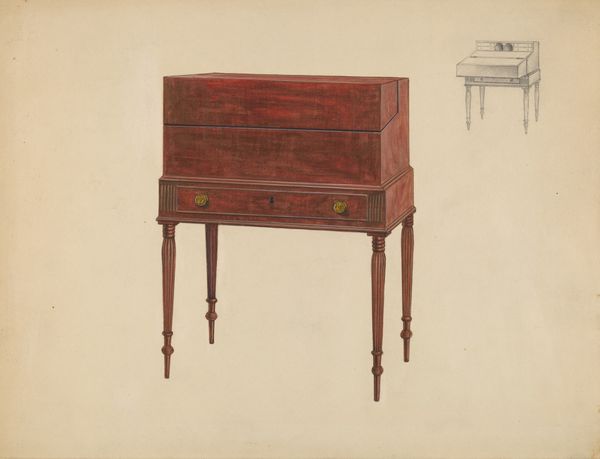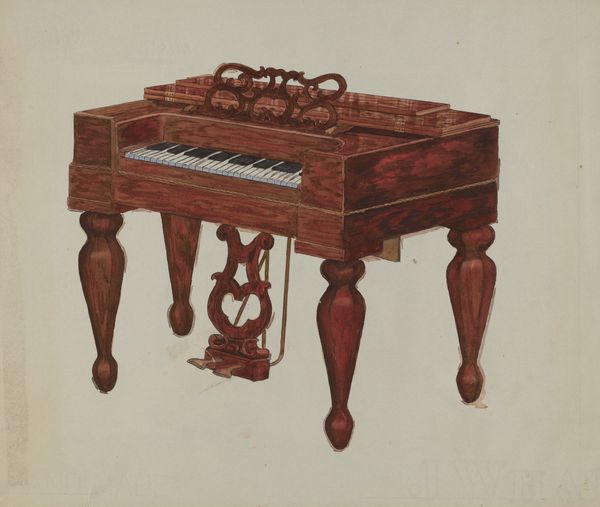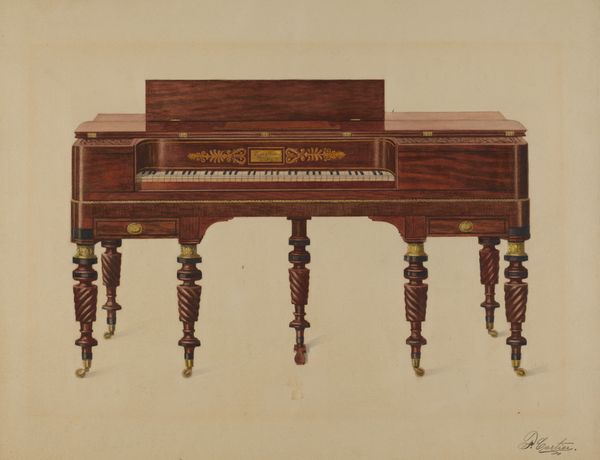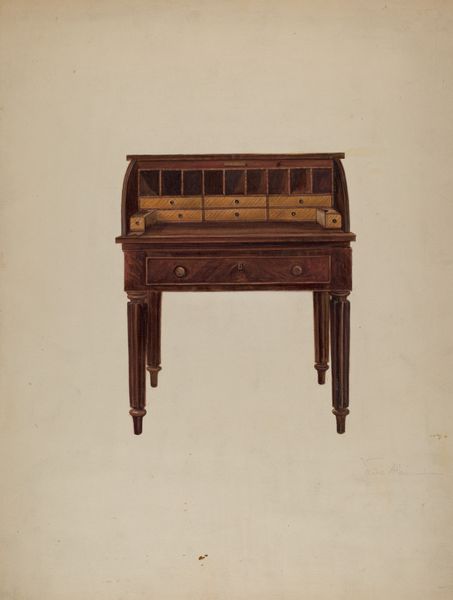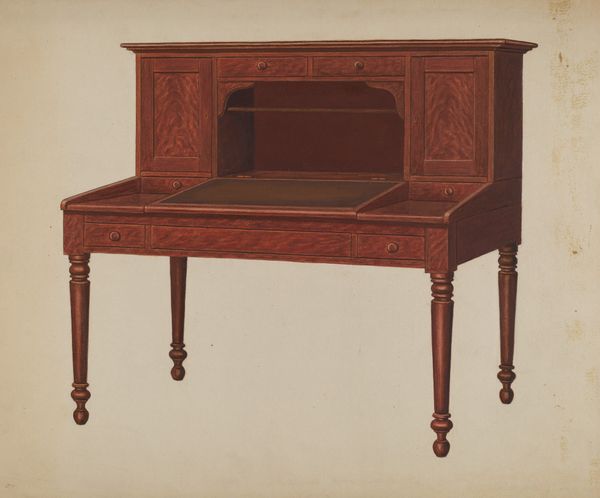
drawing, watercolor
#
drawing
#
charcoal drawing
#
oil painting
#
watercolor
#
watercolour illustration
#
genre-painting
#
watercolor
Dimensions: overall: 25.3 x 34.2 cm (9 15/16 x 13 7/16 in.) Original IAD Object: 37" long; 20" wide; 29" high
Copyright: National Gallery of Art: CC0 1.0
Editor: So, this is "Melodeon," a watercolor by John Dieterich from around 1936. There's a delicate, almost fragile quality to it, and it seems to capture a specific historical moment. What do you see in this piece, considering its historical and social context? Curator: I see a moment of cultural inscription. The melodeon itself speaks to a particular era of domestic leisure and musical participation, but Dieterich’s choice of watercolor—a medium often associated with amateur artistry and ‘feminine’ accomplishments—introduces fascinating layers of interpretation. How does this potentially democratizing technology intersect with gendered notions of artistic expression? Editor: That’s interesting – I hadn’t thought about the medium as a gendered choice. So, the melodeon becomes more than just an instrument; it's also about who is making and consuming music? Curator: Exactly! The availability of instruments like the melodeon enabled broader participation in music-making outside the traditionally elite and formally trained circles. Think about who typically played this instrument and where, and you start to uncover narratives of social mobility and changing cultural landscapes. But then consider, were these opportunities available to all equally? Who was excluded from these domestic performances and cultural spaces? Editor: So it is suggesting the emergence of middle class society, as opposed to high society and professionally-trained performers. Curator: Precisely. This painting freezes a moment that hints at how technology, art, and society intertwine, offering glimpses into evolving class structures and access to cultural production. This simple parlor instrument signifies enormous shifts in the history of cultural consumption and class relations. Editor: That’s made me look at the artwork differently! It’s more than just an instrument; it’s a reflection of social change and who has access to music-making and cultural life. Curator: Absolutely, seeing art through an intersectional lens can reveal histories that might otherwise remain unheard.
Comments
No comments
Be the first to comment and join the conversation on the ultimate creative platform.
